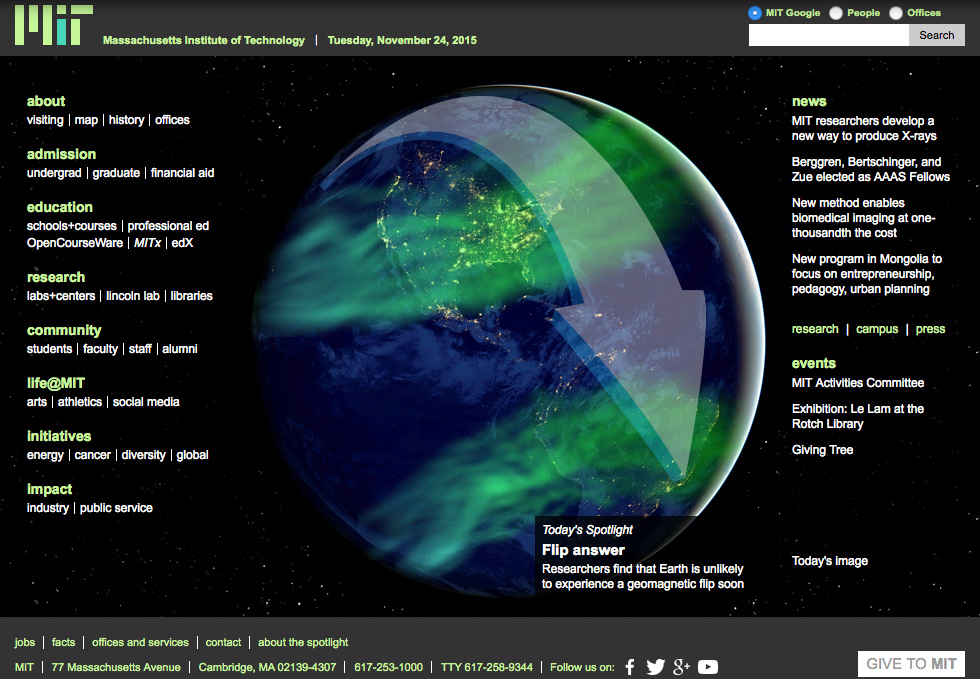Today’s spotlight features an illustration by Huapei Wang with source files courtesy of NASA and edited by MIT News. It shows an impression of latitudinally more widespread aurora as an expected consequence of geomagnetic field strength much lower than today’s.
The intensity of Earth’s geomagnetic field has been dropping for the past 200 years, at a rate that some scientists suspect may cause the field to bottom out in 2,000 years, temporarily leaving the planet unprotected against damaging charged particles from the sun. This drop in intensity is associated with periodic geomagnetic field reversals, in which the Earth’s North and South magnetic poles flip polarity, and it could last for several thousand years before returning to a stable, shielding intensity.
Read full article.
The intensity of Earth’s geomagnetic field has been dropping for the past 200 years, at a rate that some scientists suspect may cause the field to bottom out in 2,000 years, temporarily leaving the planet unprotected against damaging charged particles from the sun. This drop in intensity is associated with periodic geomagnetic field reversals, in which the Earth’s North and South magnetic poles flip polarity, and it could last for several thousand years before returning to a stable, shielding intensity.
Read full article.




